-
Posts
20,850 -
Joined
-
Last visited
-
Days Won
49
Everything posted by CaaC (John)
-
DNA study reveals Ireland's age of 'god-kings' DNA has been used to confirm the existence of an elite social class in the Stone Age inhabitants of Ireland. It's one of the earliest examples of such a hierarchy among human societies. A key piece of evidence comes from an adult male buried at the 5,000-year-old Newgrange monument; his DNA revealed that his parents were first-degree relatives, possibly brother and sister. He was one member of an extended "clan" that was buried at impressive stone monuments across Ireland. The Irish elites were established during Neolithic times when people first started farming. The researchers extracted DNA from 44 ancient individuals from across Ireland and sequenced their genomes (the full complement of genetic material contained in the nuclei of cells). Evidence of incestuous unions like that found at Newgrange are rare in human history; they are taboo for inter-linked biological and cultural reasons. Where they do occur, it is often within royal dynasties that have been granted divine status. FULL REPORT
-
Giant space chamber installed in Oxfordshire The largest vessel in the UK to test spacecraft has just been installed at the National Satellite Test Facility (NSTF) in Oxfordshire. The 98-tonne, 16m by 8m chamber is so big, it was brought to the Harwell complex in segments and then assembled in place. A roof and walls are now being added. The vessel will check the readiness of spacecraft for flight by putting them in a vacuum and at temperatures that range from -180C to +100C. It's part of a package of testing procedures to be offered by the NSTF and the associated labs it shares with the Rutherford Appleton Laboratory (RAL) on the same Oxfordshire campus. Anything from components, through sensors and instruments to completed satellites, will make use of what is being billed as a one-stop testing shop for British spacecraft manufacturers. "There was a study done by the UK Space Agency to look at what was needed to stimulate the growth of the space industry," explained Prof Chris Mutlow, the director of RAL Space. "One of the things that was identified was the requirement for a place where you could go to test everything. "All too frequently in this country, we've been packing stuff off to Europe to test - with all the difficulty and expense that involves. We now have a sovereign capability," he told BBC News. FULL REPORT
- 1,657 replies
-
- space exploration
- astronomy
-
(and 1 more)
Tagged with:
-
Not a snooker fan anymore nowadays but Thorne was one of the old brigade when the likes of Stephen Hendry, Steve Davis, Hurrican Higgins and others were around at their peak, R.I.P. Willie, they don't make players like you anymore.
-
Europe pushes ahead with 'dune buggy' Mars rover The European Space Agency is moving rapidly to develop its next Mars rover. It already has one vehicle set to go to the Red Planet in 2022 but is now pushing ahead with a second robot, which will depart in 2026. This additional rover is part of the US-European project to return rock samples to Earth for analysis. Esa has awarded an advanced B2 contract to the UK arm of the aerospace giant Airbus, which will enable the firm to kick-start the necessary technologies. The new rover is dubbed "Fetch" because its mission will be to find and retrieve the rock samples that have been collected and cached on the surface by the American Perseverance rover, which is heading to Mars next month. Perseverance will drill interesting rocks and put the tailings in small tubes, which it will then drop to the ground. The UK-built Fetch robot will pick up these cylinders and take them to a rocket system that will fire the samples up into space where a satellite will be waiting to capture them and bring them home. Esa and its US counterpart, Nasa, want to despatch the Fetch robot and rocket system to Mars in 2026. The limited-time means Esa has had to compress its normal contracting arrangements with industry and is effectively sole-sourcing from Airbus. Ordinarily, companies would still be in open competition at this stage of a project. "Because of the tight schedule, we came up with this idea of an advanced B2 contract that will allow our key sub-contractors on all the major systems to get to work right away," said Airbus project manager Ben Boyes. The most obvious difference between Fetch and Esa's 2022 Rosalind Franklin rover is the locomotion system. Mars rovers have traditionally been six-wheelers. Fetch will have just four large wheels, giving it the look of a "dune buggy". This design decision is controlled in part by the volume constraints of the capsule system that will take Fetch and its associated equipment to Mars, but also by the type of driving the rover will have to do when it gets on the ground. Engineers envisage the 230kg Fetch robot as something of a speedster, travelling hundreds of metres a day over sometimes difficult terrain as it searches for, and retrieves, the rock canisters dropped by Perseverance. "These wheels really are pretty big," explained Mr Boyes. "Rosalind Franklin's wheels are about 25cm in diameter; the wheels on Fetch are 70cm. But while Rosalind Franklin is an exploration mission where a decision can be taken to avoid the tricky ground, Fetch has a very specific job and will be under time pressure. It may need to cross the fractured ground." The wheels have been developed by Nasa at its Glenn Research Center and the B2 contract will see examples fitted to a prototype rover, or breadboard, to demonstrate their capability. This prototype will also feature a visual recognition system that identifies the sample tubes on the ground, a test robotic arm and gripper system to practise picking them up, and autonomous navigation technology to enable the vehicle to move around safely. "In field trials we will do a full end-to-end system confidence test, to build on the individual technologies we're developing," Mr Boyes said. "In these trials, we'll drive up to 100m, look around, find a tube, and pick it up. That's what we're really focussing on in this phase of the project." Airbus has pulled into its consortium a lot of the top European space engineering companies, including Franco-Italian firm Thales Alenia Space with which it might still have been in competition during a more familiar Esa contracting process. Other big names include Italy's Leonardo, which is working on the robotic arm; and Canada's MDA, the company which made the chassis system for Rosalind Franklin. The B2 phase will continue into 2021, when, assuming Esa is happy to proceed, the project will then roll straight into the build phase - what is called the C and D phases of the project. European space ministers approved funding up to November 2022. They'll need to sanction more funds at that point, but the expectation is that the Fetch rover will be built and ready to ship to the US in 2025. It's in America that the rover will be integrated into the landing platform that also houses the rocket system to take the retrieved rock samples up into Mars orbit. Europe will be building the waiting satellite as well. The announcement of the contract for the next phase of this element, known as the Earth Return Orbiter, is imminent. Returning rock samples from Mars is an especially complex and expensive project (costing many billions), but if all the planned aspects come together it's hoped Earth laboratories could be examining small chunks of the Red Planet's crust is perhaps 2031. https://www.bbc.co.uk/news/science-environment-53062617
-
RUN FOR THE HILL'S An alternate reading of the Mayan calendar suggests the end of the world is next week June 13, 2020 | 12:30pm | Updated If you thought COVID-19, civil unrest, locusts, volcanic eruptions and hurricanes signalled Armageddon — you may be right! https://nypost.com/2020/06/13/reading-of-mayan-calendar-suggests-end-of-the-world-is-next-week/?utm_source=url_sitebuttons&utm_medium=site+buttons&utm_campaign=site+buttons&fbclid=IwAR2Oekgxj6LxdO7ofpfGtNSkMYiq6oRffIz3um-1Jkoob75YQWOSh2mrjqk
-
-
"When the missus says she's having the fillet steak and you see it's £28.99..." Then I would smile, order two as the daughter was paying
-
True, the game was a big thing then when I was out there in the 60s & early 70s, there were 12 teams in the Aussie Rules game then, then it became interstate with Footscray (Bulldogs) moving location out of Victoria and became the Western Bulldogs, Fitzroy (Lions) moved and became the Brisbane Lions and Sth. Melbourne (Swans) moved and became the Sydney Swans, to think the Swans home ground (Albert Park) is now pulled down and an F1 circuit is now there so I believe. Now there are 18 teams in the game out there with the Adelaide Crows, Freemantle, GWS Giants, Gold Coast Suns, Port Adelaide & West Coast Eagles joining, it's changed a hell of a lot since I was there and so has the rules but the sport has grown and they have International matches against Southern Ireland mixed playing Gaelic Football and Aussie rules, both teams playing each other swapping codes, Gaelic football is similar to Aussie rules. They televise the games alive across here on BT Sports on a Saturday morning and sometimes on a Friday and a Sunday so the game is picking up World Wide coverage and growing, at the end of the day you love it or leave it, I prefer watching a game of Aussie Rules than watching Golf or Darts any day. Gaelic football vs Aussie Rules: Is there a connection?
-
Memories, just over 6 years ago I retired from work as a 65-year-old and became officially an 'old git' as our son & daughter call me, went to Ocean Terminal Bar for a meal & drink compliments of our daughter with grandsons in tow, wee Kaiden was just a year old then, how time flys.
-
Mars: Green glow detected on the Red Planet Scientists have identified a green light in the atmosphere of Mars. A similar glow is sometimes seen by astronauts on the space station when they look to the Earth's limb. The glow comes from oxygen atoms when they're excited by sunlight. The phenomenon has long been predicted to occur on other planets, but the Trace Gas Orbiter (TGO) - a joint European-Russian satellite at Mars - is the first to make the observation beyond Earth. "It's a nice result," said Dr Manish Patel from the UK's Open University. "You'd never plan a mission to go look for this kind of thing. Today, we have to be very clear about the science we're going to do before we get to Mars. But having got there, we thought, 'well, let's have a look'. And it worked." To be clear, this is different from classic aurora like the Northern and Southern Lights. These emissions are the consequence of collisions between atmospheric molecules and charged particles that are racing away from the Sun. On Earth, this type of interaction is heavily influenced by our planet's strong magnetic field, which pulls those particles down on to the poles. Aurora are not focussed in quite the same way on Mars because this world doesn't have a global magnetic field, but such emissions nonetheless exist and have already been observed. The green glow seen by astronauts at the edge of the Earth - and now by the TGO at Mars - has a separate origin. It's sunlight that's doing the work. Oxygen atoms are raised to a higher energy level and when they fall back to their resting state, they produce the tell-tale green emission. Earth has abundant oxygen in its atmosphere. But on Mars it's largely present only as a breakdown product of carbon dioxide. Sunlight will free one of the oxygen atoms in CO2, and it's the transition of this atom that's glowing green on the Red Planet. The TGO detects the excited oxygen not with an imaging camera (hence no pretty pictures) but with its Nomad spectrometer package. This instrument sees the oxygen at very particular altitudes. In a paper published in the journal Nature Astronomy, these altitudes are at 80km and 120km above the surface. The precise altitudes are dependent on the pressure of CO2. "And by looking at the altitudes of where this emission is, you can actually tell the thickness of the atmosphere and how it's varying," explained Dr Patel. "So, if you were to keep observing this phenomenon, you could see the height of the atmosphere change, something it does for example when it heats up during dust storms. This is an issue we face when we try to land on Mars because we're never quite sure just how thick the atmosphere will be when we plough through it to get to the surface." Theoretically, therefore, you could use observations of the green glow to help inform the models that guide the entry, descent and landing of Mars probes. The glow at Mars was detected by the TGO's Nomad instrument, which is led by the Royal Belgian Institute for Space Aeronomy (IASB-BIRA). Dr Patel is the co-principal investigator on Nomad's ultraviolet and visible spectrometer. https://www.bbc.co.uk/news/science-environment-53057055
-
I got hooked on the sport when we emigrated to Aussie land in the early '60s, went to nearly every game to watch Carlton play and I loved it, I have played rugby in my army days and played Aussie rules too when I was young and it was hard and could be brutal also, just because you kick a ball between 4 posts does not make it boring. Football, Rugby, Hockey etc has the same sticks or goalposts where you have to score between the posts, the good things about Aussie rules is you never get a 0-0 result like some sports and some teams as we know in football can close shop or park the bus then the match becomes a boring draw. But at the end of the day, you have to play the game to like it, watching Golf, Darts, Lawngreen Bowling etc is boring to watch for me but that does not mean I would not play the games and if I did I would more than likely enjoy playing it. They have started to play live games on BT Sport again like they do every year and I watched a game live on Saturday morning gone and I will do the same next week right up to the finals.
-
Revealed: the last supper of an armoured dinosaur You might find this one hard to stomach. Scientists have analysed the fossilised guts of a 110-million-year-old dinosaur, revealing the beast’s final meal. The football-sized stomach forms part of an incredibly well-preserved fossil of a stocky, heavily-armoured dinosaur known as a nodosaur, discovered in a Canadian mine in 2011. After eating its final meal, the dinosaur, Borealopelta markmitchelli, died and got washed out to sea – perhaps during a flood. It sank to the seafloor and was quickly entombed by mud, where it remained for millions of years. By the time it was uncovered, its seafloor burial site had become part of a mine in Alberta. “The finding of the actual preserved stomach contents from a dinosaur is extraordinarily rare,” said team member Dr Jim Basinger at the University of Saskatchewan, Canada, “and this stomach recovered from the mummified nodosaur … is by far the best-preserved dinosaur stomach ever found to date.” It appears that this dinosaur had a particular fondness for ferns. “When we examined thin sections of the stomach contents under a microscope, we were shocked to see beautifully preserved and concentrated plant material,” said team co-leader Dr David Greenwood at Canada’s Brandon University. “The last meal of our dinosaur was mostly fern leaves – 88 per cent chewed leaf material and seven per cent stems and twigs.” This is the first definitive evidence of the diet of a large, plant-eating dinosaur. This dino seems to have been a fussy eater, choosing to eat particular ferns over others, and turning up its nose at cycad and conifer leaves, which would have been common in its Early Cretaceous habitat. Its stomach also contains charcoal from burnt plant fragments, indicating that the animal was grazing in a burnt landscape, perhaps taking advantage of the first flush of ferns following a wildfire. Now, researchers will continue to analyse Borealopelta’s fossil, which promises to offer many more insights into the dinosaur’s environment and behaviour. https://www.sciencefocus.com/news/revealed-the-last-supper-of-an-armoured-dinosaur/
-
Prime Minister Scott Morrison apologizes for saying there was 'no slavery' in Australia (CNN) - Prime Minister Scott Morrison has apologized for saying earlier this week that there was "no slavery" in Australia after his comments provoked outrage and accusations that he was ignoring the country's history of forced labour. Speaking at a news conference in Canberra Friday, Morrison said he was referring specifically to the fact that the first Australian colony of New South Wales was set up without the widespread use of slave labour. "My comments were not intended to give offence, and if they did, I deeply regret that and apologize for that," he said, adding that he was a passionate advocate for the rights of Indigenous Australians. "I was simply trying to make a point that Australia, yes, we have had issues in our history, we have acknowledged them, I have acknowledged them, and we need to address them." Morrison originally made the remarks during a radio interview on Thursday, in which he was discussing the Black Lives Matter protests in the United States and around the world, and calls to remove statues of British explorer James Cook, whose arrival in Australia paved the way for the first European colony. "My forefathers and foremothers were on the First and Second Fleets (of convict settlers). It was a pretty brutal place, but there was no slavery in Australia," Morrison said in the interview Thursday. FULL REPORT
-
Tiny 13,500-year-old bird statuette shows origins of Chinese art © Reuters/HANDOUT A miniature bird sculpture carved of burnt bone from China's Henan Province dating to about 13,500 ago WASHINGTON (Reuters) - A tiny statuette of a bird carved from a burnt bone about 13,500 years ago reveals the origins of Chinese art, embodying a style different from prehistoric three-dimensional artwork by people in other parts of the world, researchers said on Wednesday. The figurine, found at a site called Lingjing in Henan Province in central China, depicts a standing bird on a pedestal and was crafted using stone tools employing four sculpting methods - abrasion, gouging, scraping and incision, the researchers said. It is the oldest-known three-dimensional art from China and all of East Asia by 8,500 years, although there are primitive abstract engravings on bone and stone and personal ornaments made of animal teeth and shells predating it. The bird sculpture, the product of an Ice Age hunter-gatherer culture, is six-tenths of an inch (1.5 cm) long, apparently representing a songbird. "Examining this figurine under the microscope and looking at its high-resolution 3D reconstruction is a moving experience. It opens a window on micro-gestures made by a great artist," said archaeologist Francesco d'Errico of the French National Centre for Scientific Research, who is also attached to the Universities of Bordeaux and Bergen. Humankind's earliest-known three-dimensional carvings, made of mammoth ivory, date to 40,000 years ago from southern Germany. The bird was so expertly crafted from the bone of an unidentified mammal that the artist made the tail slightly oversized so the figurine would not fall forward, indicating an understanding of achieving balance, said d'Errico, a senior author of the research published in the journal PLOS ONE. It is still unclear whether three-dimensional artwork arose independently in various locales or by diffusion from a prehistoric centre of origin. The figurine differs in size, style and technology from older and contemporaneous carvings from Europe and Siberia, d'Errico said, suggesting it belongs to a distinctive Chinese artistic tradition. https://www.msn.com/en-gb/news/offbeat/tiny-13500-year-old-bird-statuette-shows-origins-of-chinese-art/ar-BB15jHRv
-
Solar Orbiter: Europe's Sun mission makes first close pass VIDEO Europe's Solar Orbiter (SolO) probe makes its first close pass of the Sun on Monday, tracking by at a distance of just over 77 million km. SolO was launched in February and is on a mission to understand what drives our star's dynamic behaviour. The close pass, known as a perihelion, puts the probe between the orbits of Venus and Mercury. In the coming years, SolO will go nearer still, closing to within 43 million km of the Sun on occasions. As it stands today, only five other missions have dived deeper into the inner Solar System: Mariner 10, Helios 1 & 2, Messenger, and Parker Solar Probe. Earth orbits 149 million km (93 million miles) on average from the Sun. SolO is a European Space Agency (Esa) craft that was assembled in the UK by the aerospace company Airbus. FULL REPORT
- 1,657 replies
-
- space exploration
- astronomy
-
(and 1 more)
Tagged with:
-
-
Fucking loved to know what she tossed at him Might be a pot, I have had that treatment from the wife over the years when I annoyed her when I was drunk.
-
I will post this in here, I was torn between the Space: The Final Frontier thread or in here, Inga's thread, Kathy Sullivan has done both, went into the wild blue yonder of Space and to the bottom of the ocean in the Challenger Deep Dive, what a lady Kathy Sullivan: The woman who's made history in sea and space Making headlines is never something that has motivated Kathy Sullivan. Already in the history books as the first US woman to complete a spacewalk in 1984, the 68-year-old found herself in the news again this week after becoming the first woman to travel almost seven miles (11km) to reach the lowest known point in the ocean. The two missions, total opposites in the minds of some, represent two extremes of a lifelong passion for Dr Sullivan: to understand the world around her as much as possible. "I was always a pretty adventurous and curious child with interests wider and more varied than the stereotype of a little girl," Sullivan told the BBC in a phone interview from the Pacific Ocean. She was born in New Jersey in 1951 and spent her childhood in California. Her father was an aerospace engineer who, along with her mother, would always encourage their two children to think freely and join in with discussions. "They really fed our curiosity on anything we were curious about or interested in," she says. "They were our best allies to explore that interest further and see where it might take us: it might die out in a couple of days, it might be something that became our best hobby or it might turn into the central focus of our career." By the time they were five or six, it was already clear her brother wanted to grow up to fly aeroplanes. Sullivan, meanwhile, became fascinated by maps and learning more about the interesting places on them. "Both of our careers have basically been remarkably wonderful fulfilments of those early dreams," she reflects. FULL REPORT
-
‘DNA fingerprinting’ may help to decipher Dead Sea Scrolls Researchers have analysed the DNA of the animal skins the Dead Sea Scrolls were printed on. Made up of more than 25,000 fragments of ancient manuscripts, the Dead Sea Scrolls are perhaps the world’s most challenging jigsaw puzzle. Since their discovery in the 1940s and 50s, researchers have worked to painstakingly piece them together with only limited success. Now, researchers at Tel Aviv University have developed a technique that may help to decipher the ancient scriptures using ‘DNA fingerprints’ lifted from the animal skins on which the enigmatic texts were written. “The discovery of the 2,000-year-old Dead Sea Scrolls is one of the most important archaeological discoveries ever made,” says Oded Rechavi of Tel Aviv University in Israel. “However, it poses two major challenges: first, most of them were not found intact but rather disintegrated into thousands of fragments, which had to be sorted and pieced together, with no prior knowledge on how many pieces have been lost forever, or – in the case of non-biblical compositions – how the original text should read. “Depending on the classification of each fragment, the interpretation of any given text could change dramatically.” The team extracted ancient DNA of the animals that were used to make the parchments and then used forensic-like analysis to establish genetic relationships between the different fragments. A tiny fragment of the scrolls being sampled for testing © Courtesy of the Israel Antiquities Authority, Photographer Shai Halevi The DNA sequences revealed that the parchments were mostly made from sheep and some from a cow. They reasoned that pieces made from the skin of the same animal must be related and that scrolls from closely related animals were more likely to fit together than those from more genetically different animals. They found that pieces previously thought to belong together in a copy of the biblical prophetic book of Jeremiah came from a sheep and a cow, suggesting they don’t in fact belong together. They also found that different copies of a non-biblical, liturgical work known as the Songs of the Sabbath Sacrifice, found in Qumran and Masada were significantly genetically different, suggesting that the work was more widespread than originally believed. “What we learn from the scrolls is probably relevant also to what happened in the country at the time,” said Prof Noam Mizrahi. “As the Songs of the Sabbath Sacrifice foreshadows revolutionary developments in poetic design and religious thinking, this conclusion has implications for the history of Western mysticism and Jewish liturgy.” The researchers now hope to build on their initial success by testing more samples to add to the database with the end goal of creating a Dead Sea Scroll genome. https://www.sciencefocus.com/news/dna-fingerprinting-may-help-to-decipher-dead-sea-scrolls/
-
Roman city revealed in ‘astonishing level of detail’ by radar technology Archaeologists used ground-penetrating radar technology (GPR) to map the entire Roman city Falerii Novi dating back to the 3rd Century. Archaeologists have used advanced technology to map out an entire ancient Roman city buried deep underground without any digging. For the first time, archaeologists at the University of Cambridge and Ghent University in Belgium have used ground-penetrating radar (GPR) to create a complete and detailed map of the Roman city of Falerii Novi in Italy. The team discovered a baths complex, a market, a temple and a public monument, as well as the city’s sprawling network of water pipes dating back to the 3rd Century. Archaeologists believe GPR technology could revolutionise our understanding of ancient settlements, making it possible to explore larger areas in higher resolution, including those that cannot be excavated because they are trapped under modern structures. Professor Martin Millett, from the University of Cambridge’s Faculty of Classics, said: “The astonishing level of detail which we have achieved at Falerii Novi, and the surprising features that GPR has revealed, suggest that this type of survey could transform the way archaeologists investigate urban sites as total entities.” A map of the Falerii Novi site as it would have looked in the 3rd Century Working in a similar fashion to regular radar, GPR technology bounces radio waves off objects and uses the “echo” to build up a picture at different depths. While traditionally archaeologists would dig in the ground to unearth new discoveries, the team surveyed 30.5 hectares (75 acres) within the city’s walls – just under half the size of Pompeii – by towing GPR instruments behind a quad bike. The theatre at Falerii Novi visualised via GPR Located 50km (31 miles) north of Rome and first occupied in 241 BC, Falerii Novi survived into the medieval period until around 700 AD. Prof Millett and his colleagues have already used GPR to survey Interamna Lirenas in Italy, and, on a lesser scale, Alborough in North Yorkshire, but they now hope to see it deployed on far bigger sites. Quad with GPR array and researcher Lieven Verdonck on Falerii site “It is exciting and now realistic to imagine GPR being used to survey a major city such as Miletus in Turkey, Nicopolis in Greece or Cyrene in Libya,” said Prof Millett. “We still have so much to learn about Roman urban life and this technology should open up unprecedented opportunities for decades to come.” https://www.sciencefocus.com/news/roman-city-revealed-in-astonishing-level-of-detail-by-radar-technology/
-
NASA spacecraft sends back images of stars from 4.3 billion miles away Photos - 1/50 - New Horizons explores Pluto, Arrokoth (CNN) - From its unique vantage point 4.3 billion miles from Earth, NASA's New Horizons spacecraft has captured images of nearby stars — and the stars appear to be in different positions than where we see them from Earth. This is the first time this kind of "parallax effect" has been captured using a spacecraft. You can mimic this by holding a finger about an arm's length from your face and see how it appears to jump when you close your left or right eye, according to a release by NASA. "It's fair to say that New Horizons is looking at an alien sky, unlike what we see from Earth," said planetary scientist Alan Stern, New Horizons principal investigator from the Southwest Research Institute in Boulder, Colorado, in a statement. "That has allowed us to do something that had never been accomplished before — to see the nearest stars visibly displaced on the sky from the positions we see them on Earth." New Horizons is on a course to interstellar space, much like the Voyager probes. It previously flew by Pluto and its moons in 2015 before conducting a flyby of the distant Kuiper Belt object, known as Arrokoth, in January 2019. In April, at a distance of 4.3 billion miles from Earth, New Horizons aimed its long-range telescopic camera to nearby stars Proxima Centauri and Wolf 359. They are still 4.2 and 7.795 light-years away from us, respectively. Stereoscopic milestone The stars appeared to be in different locations through the parallax effect, meaning that the stars seemed to shift against the background since New Horizons was viewing it from a different viewpoint. Scientists use the parallax effect to measure the distances to stars. The New Horizons image of star Wolf 359 is on the left. If you have a stereo viewer, you can use it on this image. If not, look at the centre of the image and let your focus shift to see the combined third image. "The New Horizons spacecraft is truly a mission of firsts, and this demonstration of stellar parallax is no different," said Kenneth Hansen, New Horizons program scientist at NASA Headquarters in Washington, DC, in a statement. "The New Horizons spacecraft continues to speed away from Earth toward interstellar space and is continuing to return exciting new data for planetary science." The images were created by New Horizons' Lauer, New Horizons Deputy Project Scientist John Spencer and astrophysicist, team collaborator and Queen guitarist Brian May. "It could be argued that in astro-stereoscopy — 3D images of astronomical objects — NASA's New Horizons team already leads the field, having delivered astounding stereoscopic images of both Pluto and the remote Kuiper Belt object Arrokoth," May said. "But the latest New Horizons stereoscopic experiment breaks all records. These photographs of Proxima Centauri and Wolf 359 — stars that are well-known to amateur astronomers and science fiction aficionados alike — employ the largest distance between viewpoints ever achieved in 180 years of stereoscopy!" https://edition.cnn.com/2020/06/14/world/nasa-new-horizons-nearby-stars-scn/index.html
- 1,657 replies
-
- space exploration
- astronomy
-
(and 1 more)
Tagged with:
-
Australia's rare, elusive night parrot may not see that well in the dark (CNN) - Australia's night parrot is nocturnal, but the rare and elusive bird may not actually be able to see very well in the dark, according to a new study. In fact, the bird's vision is likely similar to that of daytime parrots. The fact that this parrot isn't adapted to living in the dark, despite its nocturnal status, could be contributing to its critically endangered status. The study published Tuesday in the journal Scientific Reports. "Night Parrots must be able to find their way at night — to find food, avoid obstacles while flying, and escape predators," said Vera Weisbecker, study author and associate professor in evolutionary biology at the Flinders University's College of Science and Engineering, in a statement. "We, therefore, expect their visual system to show adaptations for seeing in the dark, similar to other nocturnal birds — New Zealand's Kakapo parrot and owls with enlarged eyes, for example. However, we found that this wasn't the case." This species is so rare that the researchers only had one intact skull to scan and study. They compared the CT scans with those from skulls of related parrots. The researchers discovered that the night parrot had eyes similar in size to other parrots. It also had smaller optic nerves and lobes. This means that the night parrot has a sensitive vision, but it's not great for seeing in the dark. It also has poor resolution, so it can't distinguish between obstacles, like wire fencing in the Australian outback, or predators coming after it. Fencing is used in the Australian outback to contain livestock and keep predators away. "These results suggest that removal of unused fences should be a priority in areas where night parrots are known to occur," said Nick Leseberg, study coauthor, night parrot specialist and doctoral student from the University of Queensland's School of Earth and Environmental Sciences, in a statement. "However, we probably can't go entirely without fences — stock needs to be managed with fences, and some forms of predator exclusion could be important for protecting the Night Parrot. We, therefore, need to be very careful with our fencing strategies, at least by increasing the visibility of wire fences, but alternatives such as low-tension electric fencing could be even better." A rare breed The specimen studied was actually found in 1990 by Australian Museum bird expert Walter Boles. "He spotted its mummified body by accident, lying by the side of the road after apparently being hit by a truck — it is amazing that its skull stayed intact," Weisbecker said. The bird species was first recorded in 1845, but after 1912, it seemed to disappear. The bird is so rare that it was thought to be extinct for the majority of the 20th century. Night parrots are one of only two nocturnal parrot species in the world. The other is the Kakapo in New Zealand. Night parrots keep themselves well hidden in the Australian outback. After the mummified bird was found in 1990, it would be another 23 years before they were spotted living in the wild. Now, scientists and conservationists work to protect the species. "The species is so elusive that we do not even know how many individuals are left," said Andrew Iwaniuk, study co-author and biologist at the University of Lethbridge in Canada, in a statement. "To conserve the species, it is critical that we understand its behavioural needs and capabilities, but these are nearly impossible to observe." https://edition.cnn.com/2020/06/09/world/australia-night-parrot-scn/index.html
-
Yes, and I played it when I was in Aussie land, it might be shite to watch but playing it can be brutal, saying that 'COME ON THE BLUES' that's Carlton, the team I supported and still do.



.thumb.png.cc74db6251e3204fbb8cd68e3aaeb1ca.png)




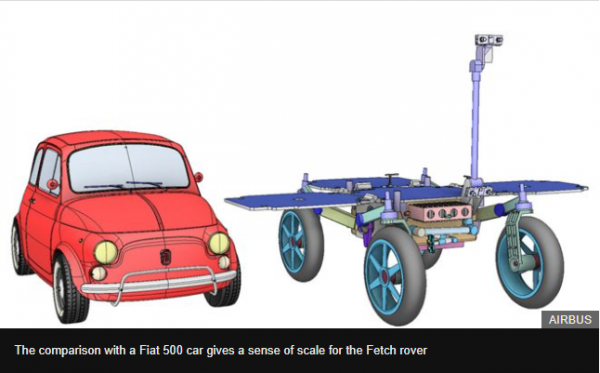
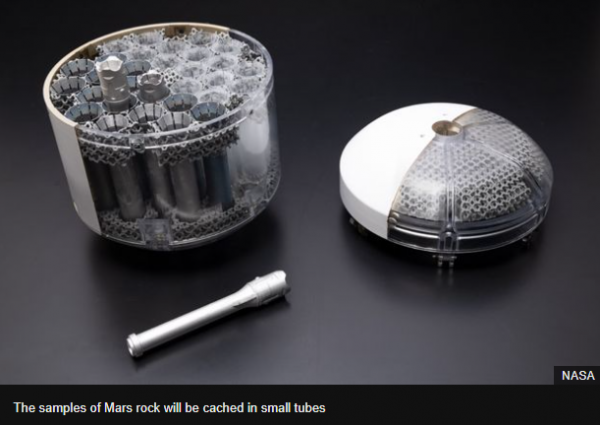
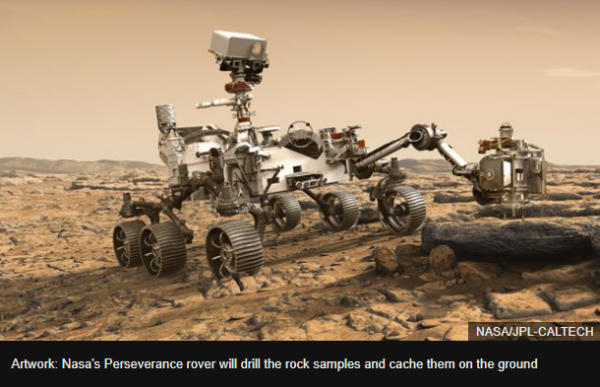

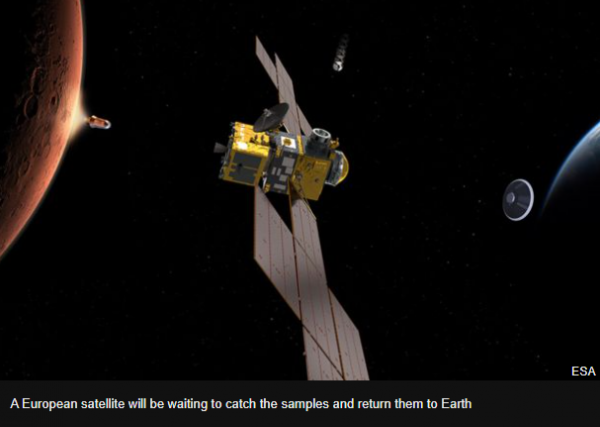



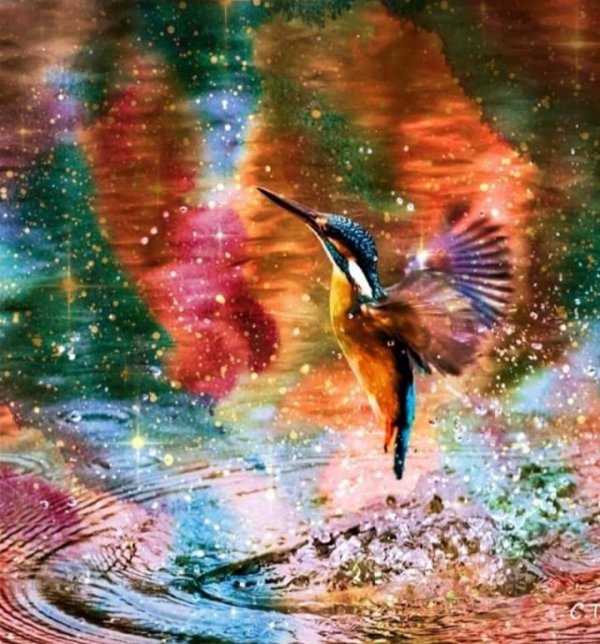
.png.cb065b2f9ecbba9befa8957c822538d4.png)

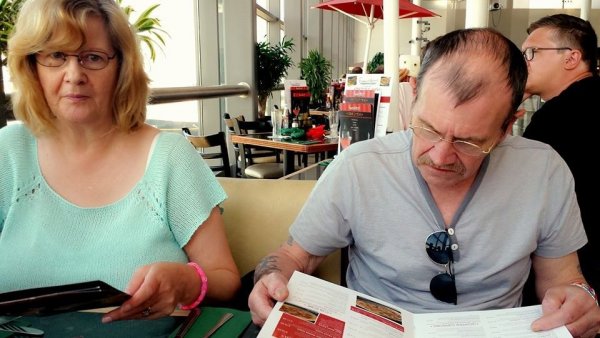

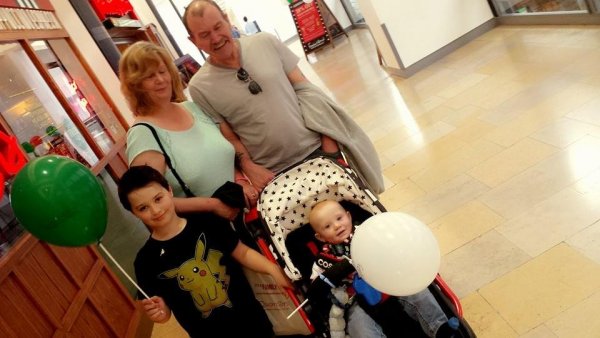

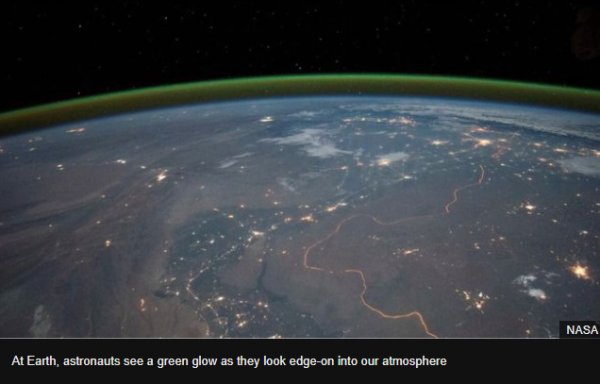
.thumb.png.b1fafdbd4a1340114714865b9d2380a7.png)






.thumb.png.97d581ac571a7395df73e16c263113fc.png)
.thumb.png.a239d00fcdffc4e3d27a0d6b8ab364f7.png)
.thumb.png.21489a1899ef862277aa3a2463964108.png)
.thumb.png.bd8a6aa3421d8e600aa4f995b97e4aec.png)




.thumb.png.10fa67d2b6d5071df539b7a1191ddce4.png)
